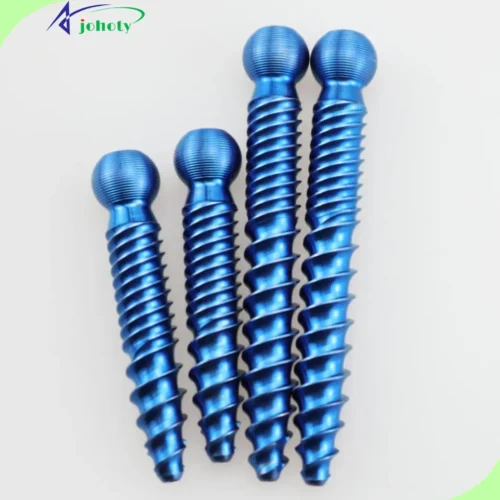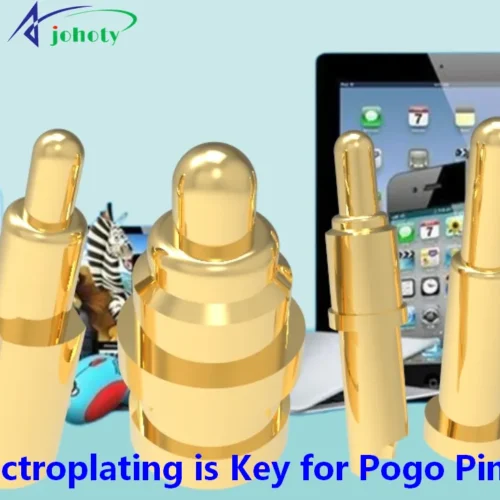What Happens When Screws Are Removed from Bones. In orthopedic surgery, bone screws or medical screws are crucial in the recovery of fractures and other skeletal issues. However, the removal of screws post-surgery is equally important. This article will delve into the body’s response after screw removal, the necessary rehabilitation measures, and how to minimize complications.
What Happens When Screws Are Removed from Bones. Bone screws are metallic instruments used in orthopedic surgery to fix fractures or support skeletal reconstruction. Typically crafted from stainless steel or titanium alloy, widely employed due to their excellent biocompatibility and mechanical strength.
They effectively stabilize bones, aiding in the process of fracture healing. Depending on the treatment requirements, can remove bone screws may after recovery or left permanently in the body.
Introduction about What Happens When Screws Are Removed from Bones
In orthopedic surgery, the use of bone screws is a common fixation method. and is aimed at promoting stability and healing of fractured or surgically treated bones. However, a critical step post-surgery may involve the removal of these medical screws.
This blog post will delve into what patients might experience after the removal of bone screws, And how this process impacts the recovery journey. We’ll detail the steps involved in screw removal, issues patients need to be aware of. And how medical professionals assess the timing of removal.
This information is crucial for healthcare managers to ensure patients receive optimal care throughout the treatment process.
Functions and Types of Bone Screws, Medical Screws
Functions of Bone Screws:
- Fracture fixation: Bone screws physically hold fractured bone fragments together, maintaining their proper position and alignment. Thus promoting the natural healing process of bones.
- Stabilization of fracture sites: By inserting into the fracture site, bone screws provide necessary stability. Prevent displacement of the fracture due to daily activities or muscle contractions.
- Assisting in implant fixation: During joint replacement or bone reconstruction surgeries. Bone screws can also secure and support implanted artificial joints or other biological materials.
- Correction of skeletal deformities: In orthopedic corrective surgeries, bone screws can be used to reposition or alter the shape of bones. It is to correct deformities caused by developmental abnormalities or post-traumatic sequelae.
Types of Bone Screws:
- Cortical bone screws: Primarily used for fixing the cortical bone of long bones, which has a hard outer layer. They are slender and can penetrate the hard cortical bone, providing sturdy fixation.
- Locking bone screws: Used with locking plate systems, suitable for complex or unstable fractures. They can be used in conjunction with specific locking systems, where the screw head locks into the plate hole, forming a more stable construct.
- Absorbable bone screws: Used for fracture treatment where long-term internal fixation is not needed. Made of biodegradable materials, they gradually absorb over time in the body. Eliminate the secondary surgery.
- Slotted screws: Mainly used for fixing small bones, such as hand or foot surgeries. They are small and designed to provide transverse stability through small bones.
- Kirschner wires: Typically used for temporary fixation or as an adjunct tool to determine the optimal fixation of fractures. Very fine metal wires that can be easily bent and cut, suitable for delicate procedures.
- Cannulated screws: Used for more precise fracture fixation, typically used in cases where guided pin positioning is required. Screws with a central hole that allows for precise positioning through K-wires or other guiding devices.
Indications for Removal of Bone Screws, Medical Screws
Each patient’s situation is unique, and doctors consider multiple factors when evaluating whether to remove bone screws. Includes the patient’s overall health, medical history, degree of fracture healing, and potential risks and benefits.
Complete fracture healing:
- The most common indication for removing bone screws is when the fracture has completely healed. Once the fracture area is stable and the bone has regained its normal function. The bone screws as additional support may no longer be necessary.
- Removing the bone screw at this point can reduce the potential long-term risks associated with carrying foreign objects. Such as corrosion or metal fatigue.
Bone screws-related complications:
- Infection: If the tissue surrounding the fixation becomes infected, removal of the bone screws may be necessary to clear the source of infection.
Pain and discomfort: Some patients may experience localized pain or discomfort caused by the bone screws. Especially, after changes in weather or physical activity.
Allergic reactions: Although it’s uncommon, there are cases where patients might develop sensitivity or allergies to metal components, such as nickel. Leading to local or systemic reactions that require removal of the bone screws.
Functional issues:
- Restricted joint function: If the position of the bone screws is close to a joint or somehow affects the range of joint motion. Removal may be necessary to restore normal joint function.
- Bone screw fracture or displacement: If the fractures or shifts of bone screws within the body, it may cause injury to surrounding tissues or pain. It typically necessitates removal.
Bone screw removal in children:
- In children and adolescents, as they are still growing, retaining bone screws may affect normal bone growth or lead to skeletal deformities. Therefore, the removal of bone screws may need to be considered after ensuring fracture healing.
Patient’s personal choice:
- In some cases, even if the bone screw does not cause complications, patients may choose to have it removed for personal reasons. Such as not wanting to have metal inside their body.
Surgical Process for the Removal of Bone Screws, Medical Screws
Preoperative Preparation
- Medical assessment: The procedure entails a comprehensive review of the patient’s medical history. Including an in-depth review of their medical history, and diagnostic imaging like CT scans or X-rays. It is to confirm the position of the medical screws and the healing status of surrounding bones.
- Preoperative instructions: patients will receive guidance on preoperative fasting, possible medication adjustments, and postoperative care.
- Surgical site preparation: This step entails meticulously cleaning and disinfecting the surgical area to minimize the possibility of infection.
Anesthesia
- The doctor selects an anesthesia of local or general for the patient. Adapted to suit the patient’s distinct condition and the precise surgical location, the strategy is thoughtfully devised.
Surgical Approach
- Incision: a precise incision is made over the skin covering the screws, usually along the previous surgical scar. It is to minimize new tissue damage.
- Exposure of bone screws: soft tissue is carefully dissected until the screw heads are fully exposed. This step requires extra caution to avoid damage to surrounding nerves and blood vessels.
Screw Removal
- Confirmation of screw condition: Confirm that the bone screws are not fractured or severely corroded, as these conditions may increase the difficulty of removal.
- Unscrewing the screws: Bone screws are slowly and steadily rotated out using specialized tools, such as screwdrivers. If the screws are covered by bone or integrated with bone healing, additional instruments are needed to assist in separation.
- Dealing with unforeseen circumstances: if screws fracture, additional minimally invasive surgery or the use of grasping instruments may be necessary to remove residual parts.
Cleaning and Closure
- Cleaning the surgical site: Thorough cleaning of the surgical area to ensure no foreign bodies behind.
- Wound closure: Close the incision layer by layer using absorbable or non-absorbable sutures.
Postoperative Management
- Recovery room monitoring: patients receive monitoring in the recovery room until fully awake and vital signs are stable.
- Pain management: appropriate pain control measures are provided to ensure patient comfort.
- Postoperative instructions: including activity restrictions, wound care, measures to prevent infection, and follow-up arrangements.
Follow-up
- Assessment of recovery: evaluating the recovery of the surgical site and functional recovery through regular follow-up visits and imaging studies as needed.
What Happens When Screws Are Removed from Bones
Symptom Relief
- Pain relief: Local pain caused by bone screws typically decreases after removal.
- Improvement in mobility: If bone screws restrict joint movement, patients may experience an increase in their range of motion after removal.
Postoperative Recovery
- Postoperative pain: Although long-term pain may diminish, patients may experience a period of pain and discomfort in the early postoperative period.
- Functional recovery: Over time, patients typically observe gradual restoration of function at the surgical site.
Complications
- Infection: It’s important to recognize that the risk of infection is inherent in all surgical procedures, regardless of their specifics. Including the removal of bone screws, infections can be localized or systemic.
- Bleeding: Bleeding is a potential occurrence during the surgical process, although typically manageable.
- Nerve or vascular injury: In rare cases, surgery may result in damage to nearby nerves or blood vessels.
Bone Hole Healing
- Holes left by bone screws: Removal of bone screws leaves small holes in the bone, which take time to fill and reshape.
- Healing time of bone holes: The healing time of bone holes varies from person to person, depending on individual healing ability and bone quality.
Long-term Effects
- Bone strength: In some cases, the bone near bone screws may become weaker due to long-term reliance on the screws for support.
- Bone remodeling at the screws: Long-term remodeling may involve remineralization of bone and restoration of strength.
Follow-up and Monitoring
- Regular check-ups: After bone screw removal, it’s recommended to have periodic follow-up appointments to evaluate healing and detect any complications.
- Imaging studies: Doctors can observe the progress of bone hole healing and changes in bone structure through X-rays or other imaging studies.
Rehabilitation Therapy
- Physical therapy: Patients require a period of physical therapy to accelerate recovery, strengthen muscles, improve joint range of motion, and reduce stiffness.
Postoperative Recovery and Management for Removal of Bone Screws or Medical Screws
Wound Care
- Keep the wound dry and clean: After surgery, it’s important to keep the incision area dry and clean to prevent infection. Follow the doctor’s instructions for changing dressings.
- Monitor the wound condition: Regularly check the wound for signs of redness, swelling, drainage, or abnormal discharge, as these may indicate infection.
Pain Management
- Use pain medication: Use prescription pain relievers as directed by the doctor, such as NSAIDs or other analgesics, to control postoperative pain.
- Cold or heat therapy: Under the doctor’s advice, use cold or heat therapy appropriately to help alleviate pain and swelling.
Activity and Restrictions
- Gradually increase activity: Gradually increase activity levels under the guidance of the doctor or physical therapist. Avoid excessive strain on the surgical site.
- Avoid weight-bearing activities: During the early stages of recovery, avoid weight-bearing activities, such as lifting or strenuous exercise. It is to avoid affecting the healing of bone nail holes.
Rehabilitation Therapy
- Physical therapy: Participate in physical therapy to help restore joint range of motion, enhance muscle strength, and promote overall recovery.
- Rehabilitation exercises: Perform customized rehabilitation exercises aimed at restoring function and reducing stiffness.
Monitoring Complications
- Regular follow-up: Follow-up according to schedule to assess recovery progress and promptly detect any potential complications.
- Timely management of complications: If there is an infection, persistent pain, or any abnormal symptoms, contact your doctor promptly.
Nutrition and Lifestyle
- Nutritional support: Ensure adequate nutrition, especially foods rich in protein, vitamin C, D, and calcium. These actions are indispensable for fostering the healing of both bone and soft tissue.
- Quit smoking: Smoking delays the healing process; quitting smoking contributes to better recovery.
Emotional and Psychological Support
- Mental health: The postoperative recovery period may induce anxiety or depression. Communication with family, friends, or professionals can provide necessary emotional support.
Complications and Risk Management after Removal of Bone Screws or Medical Screws
Complications
Infection:
- The surgical site may become infected, characterized by redness, warmth, increased pain, and possible discharge of pus.
Pre- and post-operative use of antibiotics, maintaining cleanliness of the surgical site, and timely dressing changes are essential.
Bleeding:
- Vascular damage during surgery may lead to bleeding. Careful surgical techniques during the operation and monitoring for signs of bleeding postoperatively, with necessary hemostasis if required.
Non-closure of bone screw holes:
- The holes left after bone screw removal take time to heal completely. Provide adequate nutritional support and appropriate physical therapy to promote bone healing.
Soft tissue injuries:
- There may be damage to surrounding muscles or soft tissues during surgery. Precise surgical techniques to minimize damage to surrounding tissues and interference with them.
Nerve damage:
- Accidental injury to nearby nerves during surgery may result in sensory abnormalities or weakened motor function. Careful preoperative planning of the surgical approach, and avoidance of nerve damage during surgery.
- And postoperative assessment with necessary rehabilitation measures.
Bone nail fracture or difficult removal:
- Bone screws may fracture due to prolonged retention in the body or become tightly bound to the bone, making removal challenging. Proper tools and techniques, and if necessary, more complex surgical measures.
Risk Management
Preoperative assessment:
- A comprehensive review of the patient’s overall health status and the precise surgical location, typically incorporating imaging tests. It is to anticipate and plan for potential issues during surgery.
Intraoperative monitoring and techniques:
- Utilization of advanced surgical techniques and equipment to ensure precision during surgery.
- Execution of procedures by an experienced surgical team to ensure adherence to best practices during the surgical process.
Postoperative monitoring and care:
- Regular follow-up and timely imaging assessments to monitor the recovery of the surgical site.
- Providing detailed postoperative care instructions, including wound care, pain management, and activity restrictions.
Patient education:
- Provide patients with comprehensive information to understand the potential risks of surgery and key points for postoperative recovery.
- Educating patients on how to recognize the initial indications of complications and understand when it’s necessary to seek medical help.
- Through comprehensive complications and risk management strategies, can minimize postoperative issues. Ensures the safety and healthy recovery of patients.
Use Case about What Happens When Screws Are Removed from Bones
Patient Background
- Age and Gender: 34-year-old female
- Health Condition: Previously in good health, no chronic illnesses
- Injury Details: Ankle fracture sustained in a skiing accident
Initial Treatment and Bone Screw Fixation
- Post-accident Management: After the accident, immediately transfer the patient to the closest hospital. Following the initial assessment confirmed a complex ankle joint fracture.
- Surgical Intervention: Decided to pursue surgery due to the intricate nature of the fracture. And use multiple steel bone screws during surgery to fix the fractured bones. Ensure proper alignment and stability to promote healing.
- Postoperative Recovery: Following surgery, the patient received antibiotic treatment to prevent infection and underwent physical therapy. It is to aid in joint function recovery.
Decision for Bone Screw Removal
- Healing Assessment: One year later, a follow-up X-ray examination revealed complete healing of the fracture. The bone screws had served their purpose.
- Reason for Removal: The patient frequently experienced ankle pain and discomfort, particularly in cold and damp weather conditions, affecting daily activities.
Bone Screw Removal Surgery
- Preoperative Preparation: Conduct comprehensive blood tests, X-rays, and MRI scans. It was to ensure complete fracture healing and assess the position of the bone nails.
- Anesthesia and Surgery: Perform the surgery under local anesthesia. Access it through the original surgical scar. And take great care to twist out the bone screws to minimize damage to surrounding tissues.
- Postoperative Care: Administer antibiotics post-surgery to prevent infection. The patient wears a support brace to protect the ankle and avoid premature weight-bearing.
Postoperative Recovery and Long-term Monitoring
- Recovery Period: In the weeks following bone screw removal, the patient continued with physical therapy to strengthen ankle muscles. It was to improve stability and flexibility.
- Long-term Tracking: Regular X-ray examinations scheduledly monitor the ankle’s condition, ensuring no long-term complications arise.
Outcomes
- Final Results: Following bone screw removal, the patient experienced significantly reduced ankle pain. Improved ability to move and a better quality of life overall.
- Follow-up examinations two years later revealed no issues, and the patient had fully resumed normal activities.
Conclusion about What Happens When Screws Are Removed from Bones
Although the removal of bone screws is a routine procedure. Each case requires careful evaluation of the patient’s condition by medical professionals. Proper management of surgical risks and complications is crucial to ensuring patient safety.
Therefore, emphasizing the importance of interdisciplinary collaboration and patient education, as well as continuously optimizing treatment guidelines. It is essential for raising the overall caliber of medical services and ensuring that patients are pleased with the care they receive.
As a leading manufacturer of precision medical screws in China, we call on industry colleagues to work together to standardize and systematize these practices. Contact our CFT team to obtain the highest-quality titanium screws. This helps ensure treatment outcomes and optimal care for each patient.













